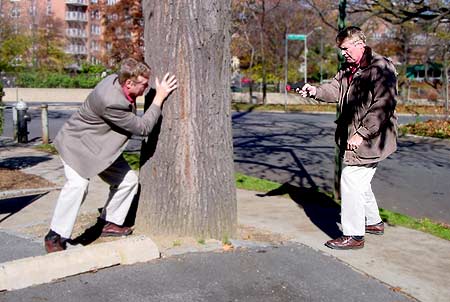
Soldiers are instructed to fire at any target within this range by simply placing their weapon's sights on the center of mass of the enemy target. Known also as "battle zero", maximum point-blank range is crucial in the military. Sights that are higher than the maximum allowable deviation push the start of the point blank range farther out from the muzzle this is common with varmint rifles, where close shots are only sometimes made, as it places the point blank range out to the expected range of the usual targets. Higher sights, up to the maximum allowable deviation, push the maximum point blank range further from the gun. If the sights are lower than the allowable deviation, then point blank range starts at the muzzle, and any difference between the sight height and the allowable deviation is lost distance that could have been in point blank range. The height of the sights has two effects on point blank range. Vermin such as prairie dogs require a much smaller deviation, less than an inch (about 2 cm). Hunting Ī large target, like the vitals area of a deer, allows a deviation of a few inches (as much as 10 cm) while still ensuring a quickly disabling hit. Other considerations include sight height and acceptable drop before a shot is ineffective. Target size determines how far above and below the line of sight a projectile's trajectory may deviate. Maximum point-blank range is principally a function of a cartridge's external ballistics and target size: high-velocity rounds have long point-blank ranges, while slow rounds have much shorter point-blank ranges. Small arms are often sighted in so that their sight line and bullet path are within a certain acceptable margin out to the longest possible range, called the maximum point-blank range. Torso Lethal Shot Placement rectangles of 450 × 225 mm (17.7 × 8.85 in) superimposed over silhouetted soldiers. Various cannon of the 19th century had point-blank ranges from 250 yards (230 m) (12 lb howitzer, 0.595 lb (0.270 kg) powder charge) to nearly 1,075 yards (983 m) (30 lb carronade, solid shot, 3.53 lb (1.60 kg) powder charge).

This distance was considered the point-blank range: any target within it required the gun to be depressed any beyond it required elevation, up to the angle of greatest range at somewhat before 45 degrees. īy repeatedly firing a given projectile with the same charge, the point where the shot fell below the bottom of the bore could be measured. This caused the projectile to rise above the natural line of sight shortly after leaving the muzzle, then drop below it after the apex of its slightly parabolic trajectory was reached. Their barrels tapered from breech to muzzle, so that when the top of the cannon was held horizontal, its bore actually sat at an elevated angle. The term originated with the techniques used to aim muzzle-loading cannon. If a weapon is sighted correctly and ammunition reliable, the same spot should be hit every time at point-blank range.

Point-blank range denotes the distance a marksman can expect to fire a specific weapon and hit a desired target without adjusting its sights. However, since none of the early sources mention a white center target, blanc may refer to empty space or zero point of elevation when testing range. It is thought the word blanc may be used to describe a small white aiming spot formerly at the center of shooting targets. The term point-blank dates to the 1570s and is probably of French origin, deriving from pointé à blanc, "pointed at white". In popular usage, point-blank range has come to mean extremely close range with a firearm, yet not close enough to be a contact shot.

Point-blank range will vary by a weapon's external ballistics characteristics and the allowable error at the target the flatter the bullet's trajectory or the larger the target, the longer the point-blank range will be. This results in a weapon that hits too high for very close targets, too low for very far targets, and point blank at some distance in between. If the sights are set so that the barrel has a small upward tilt, the bullet starts by rising and later drops. But if the target is close enough, bullet drop will be negligible so the shooter can aim the gun straight at the target. If the bullet leaves the barrel parallel to the sight, the bullet, like any object in flight, is pulled downwards by gravity, so for distant targets, the shooter must point the firearm above the target to compensate. Point-blank range is any distance over which a certain firearm can hit a target without the need to compensate for bullet drop, and can be adjusted over a wide range of distances by sighting in the firearm. This compensates for bullet drop over a given range.

When the bar on the rear sight is raised, the barrel of the rifle points slightly upwards compared to the sights. The ladder sight on an M1917 Enfield rifle.


 0 kommentar(er)
0 kommentar(er)
